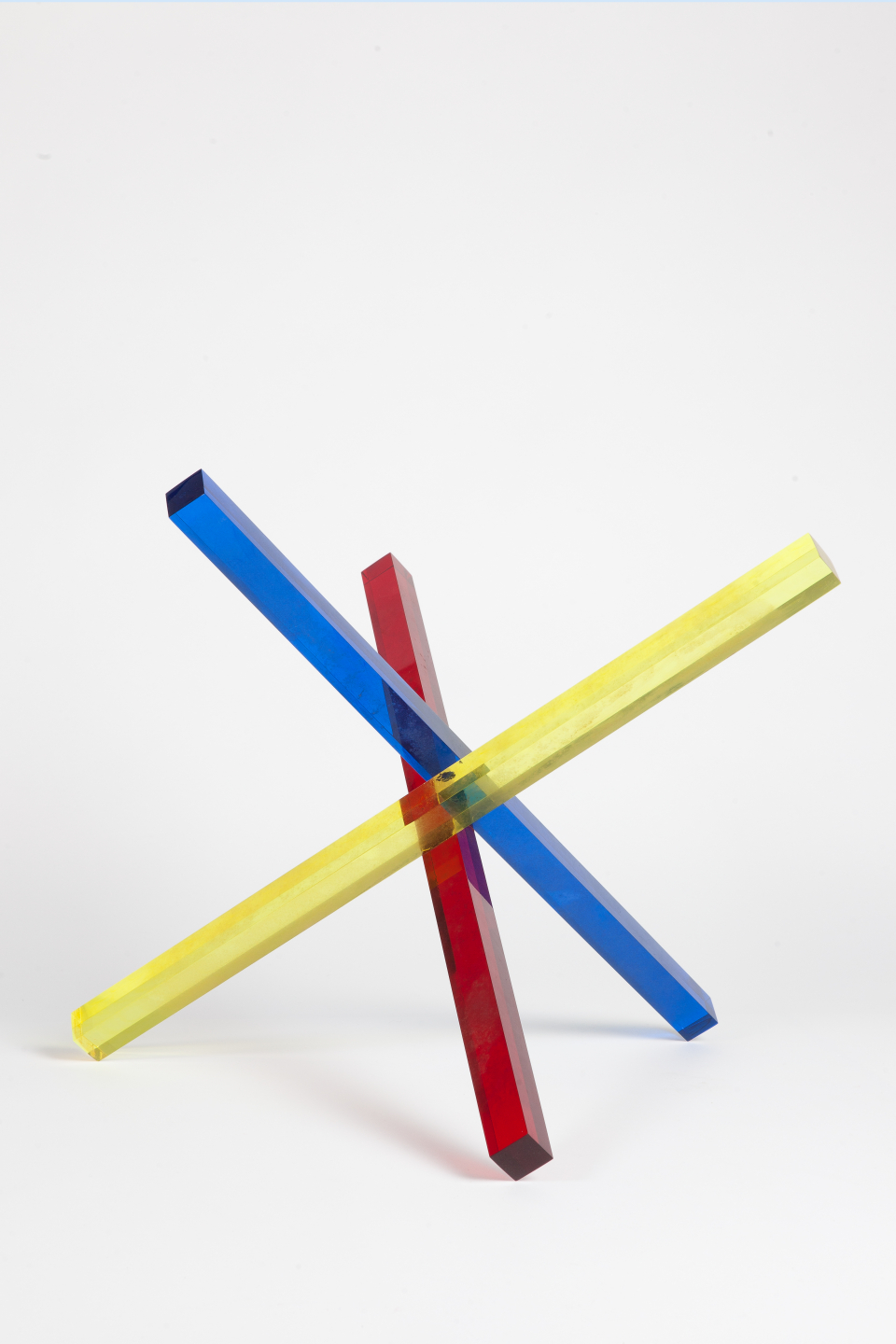Einheit aus drei gleichen Teilen
Hector-Bau > Ebene 2 > Schaudepot
Einstieg
Max Bill war als Architekt, Maler, Bildhauer, Graphiker und Designer in fast allen Gattungen der bildenden Kunst beheimatet und baute seine Arbeiten auf streng rationalen Grundlagen auf. Die »Einheit aus drei gleichen Teilen« zeigt dieses Prinzip: Drei gleich lange Stäbe in den Farben Gelb, Blau und Rot werden in ihrer Mitte verbunden, so dass die Schnitte rechte Winkel ergeben.
Das gefärbte, halbtransparente Acrylglas der Körper wiederum wirft farbige Schatten und sorgt je nach Lichtsituation für eine Mischung des gebrochenen Lichts. Bills Kunst war nicht am Abbilden vorgegebener Natur interessiert. Vielmehr ging es für den Schweizer Künstler, der von 1927–1929 ein Architekturstudium am Bauhaus absolvierte, um die Umsetzung logischer Strukturen und mathematischer Verhältnisse in eine konstruktive Formensprache.
Diese Übersetzung von abstraktem Denken in ein Kunstwerk mit mathematischen Grundlagen nannte er »Konkrete Kunst«. Konkret deshalb, weil streng rationale Überlegungen in der Konstruktion eines Kunstwerks fassbar und damit anschaulich werden.
Einstieg
As an architect, sculptor, graphic artist, and designer, Max Bill was at home in virtually all artistic genres, building his work on strictly rational foundations. This principle is illustrated by his work »Unit Composed of Three Equal Parts«. Three rods of equal length in the colors red, yellow, and blue are joined in the middle, where their intersections form right angles. Composed of colored, semitransparent acrylic glass, the rods cast colored shadows and, depending on the light conditions, result in a mixing of the refracted light.
Bill’s art was not interested in the reproduction of nature as it existed. Instead, the Swiss artist, who studied architecture at the Bauhaus between 1927 and 1929, employed a constructive formal language to pursue the realization of logical structures and mathematical relationships. He called this translation of abstract thought into a work of art according to mathematical principles “Concrete Art”—concrete because strictly rational considerations were given a manifest form in the construction of a work of art, and thus made perceptible.
Kunsthalle Mannheim
